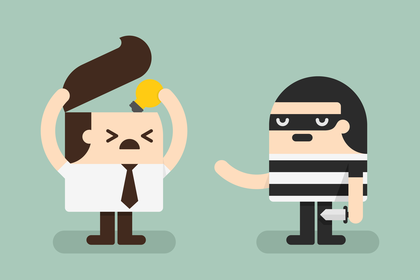
Congratulations! You’ve successfully registered your trademark and taken the first step on this important path to protecting your brand. That’s right: even after the lengthy application process you’ve already gone through, there’s still more work to be done.
Protecting and defending your trademark once you’ve registered it is an active and ongoing pursuit — but it’s critical to do so to ensure that your mark retains all the value of the effort you’ve put into establishing it.
There are several aspects to the responsibility that falls to you to properly use, maintain and protect your registered trademark. Read on to learn what steps you’ll be taking, and some tips on how to best go about them.
Remember your trademark renewal dates
Trademark protection is based on active use, and that remains true even once you’re successfully registered. The United States Patent & Trademark Office requires regular renewal filings to verify that your mark is still “alive” and viable. The most critical thing to do? Stay aware of your renewal dates:
- First renewal: five years from the anniversary date of your trademark (the date of initial registration).
- Second renewal: four years later, or nine years from initial registration.
- All subsequent renewals: every 10 years after the second renewal.
Important note: The USPTO will not remind you of upcoming renewals and does not grant extensions (aside from a six-month grace period requiring additional fees). The responsibility is fully yours, and if you miss a renewal, your mark will be automatically canceled.
Use the correct trademark symbols
You were likely using the “TM” symbol with your mark before and during your trademark application process. Once you’ve successfully registered, however, you should begin using the small circled “R.” This serves as public notice of your registration and is considered proper use of your mark by the USPTO — remember that improper use weakens a mark and makes it more vulnerable to challenge or narrowing.
Here are a few areas of the many that you’ll need to address as you enact proper use of the “R” symbol:
- Product packaging or labeling
- Marketing and advertising art and copy
- Your website and other online presences
Monitor new trademark filings
Be sure that the USPTO does not weaken your mark by approving registrations that you feel are too similar. As a registered trademark owner, you’re entitled to formally oppose any new trademark that could potentially infringe on yours. New trademarks are announced weekly — stay aware of the ways in which the protections of your mark may change, and take all actions available to you to try and prevent that from happening.
Monitor the marketplace
Trademark rights begin accruing based on use, not registration, so you’ll need to go beyond USPTO filings to be aware of anyone in the marketplace who may be illicitly using your mark, or one similar to it. If you don’t enforce your mark actively and promptly, the infringing party may be able to make a claim that their mark has strengthened enough to be legitimate and recognizable on its own — or even challenge yours on grounds of non-use or non-enforcement.
Expand your trademark coverage when necessary
The earlier you register a trademark, the better, so the case may be that your business or product is different now than it was when you filed your application. Here are some typical examples, and what you need to do:
- Expansion into new industries (file additional trademarks covering each new class of goods or services)
- New logos or branding (update your trademark specimen to show how it now identifies your company)
- New packaging or labeling (update your specimen to illustrate the new use of your mark)
Take action the right way
A cease-and-desist or other threatening type of letter can open up a legal can of worms. You need to be sure that you are within your rights of enforcement, and that you don’t say anything that could come back to haunt you should litigation be necessary. Legal assistance in situations like these can keep you and your mark protected, and will often resolve things more efficiently.
Business & Finance Articles on Business 2 Community
(460)







